Tuesday, February 18, was the bimonthly bird survey at Shollenberger Park. The team was greeted by this lovely sunrise symphony, as performed by The Red-winged Blackbird Orchestra.
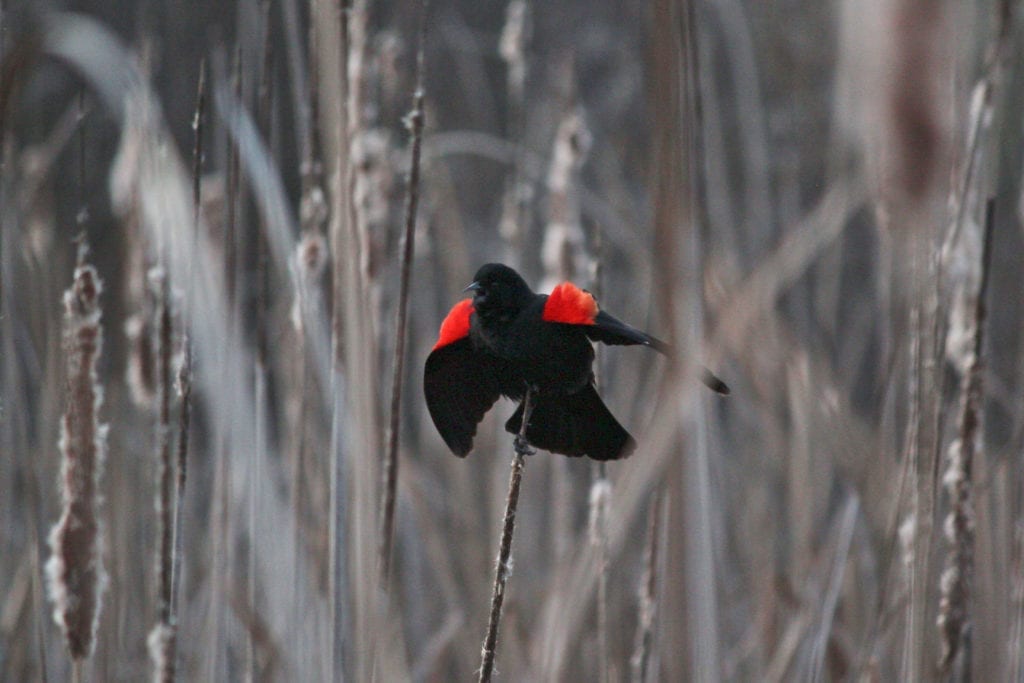
Red-winged Blackbird
Experiencing the mass exodus of blackbirds at dawn is one of many joys of each PWA bird survey.
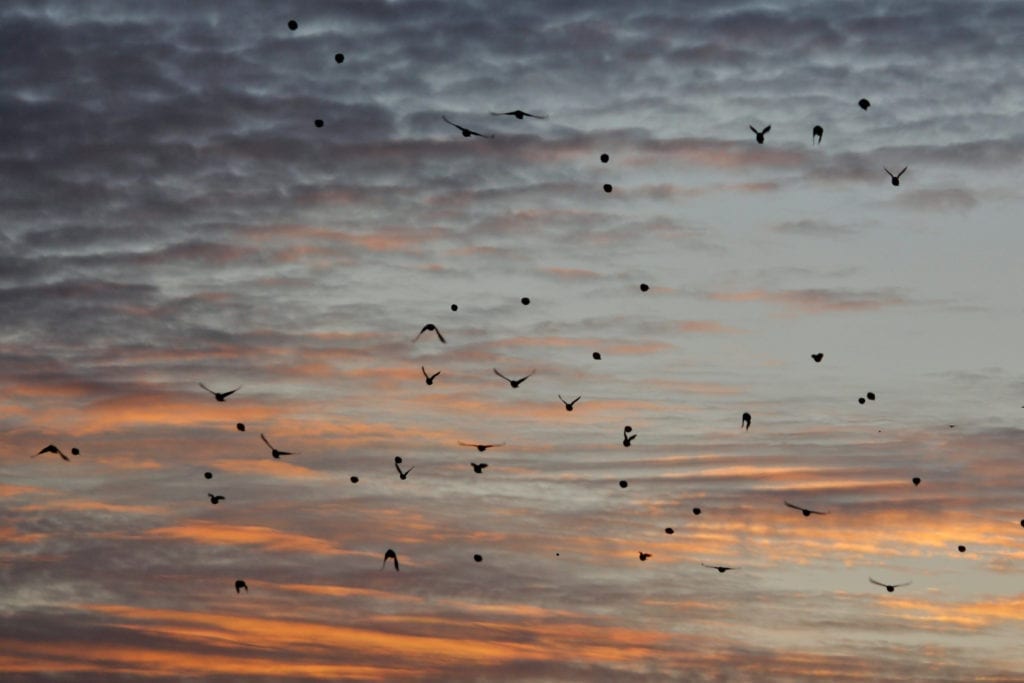
Red-winged Blackbirds
Beholding Mother Nature’s sunrise artistry is another.
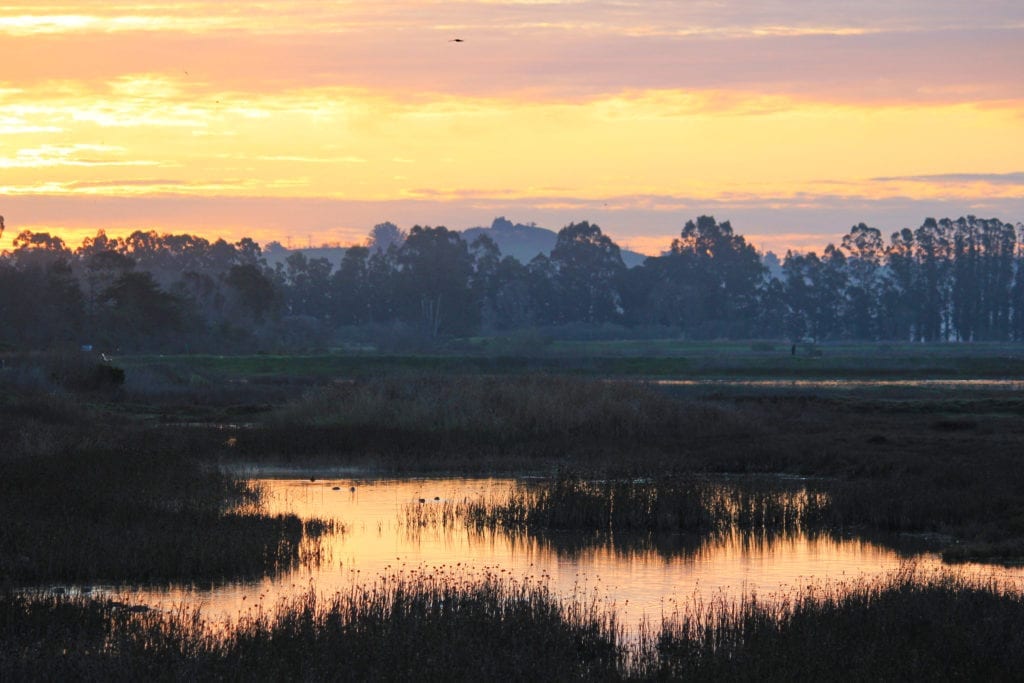
Good morning from the wetlands!
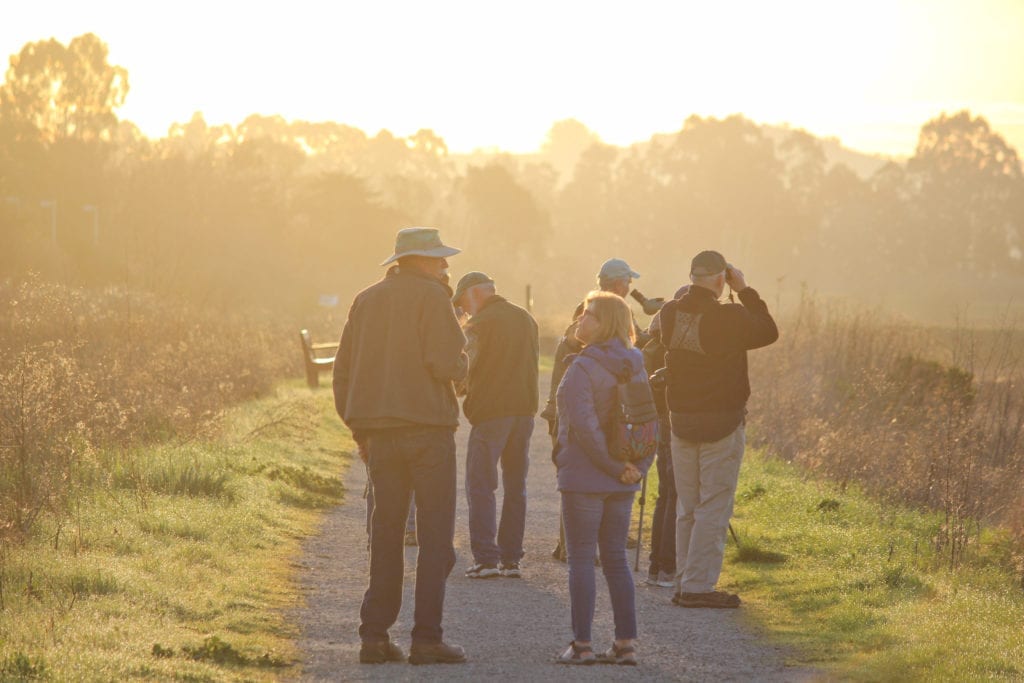
Dedicated sunrise enthusiasts awash in the morning glow
The group moved slowly down the trail, stopping frequently to tally up duck species.
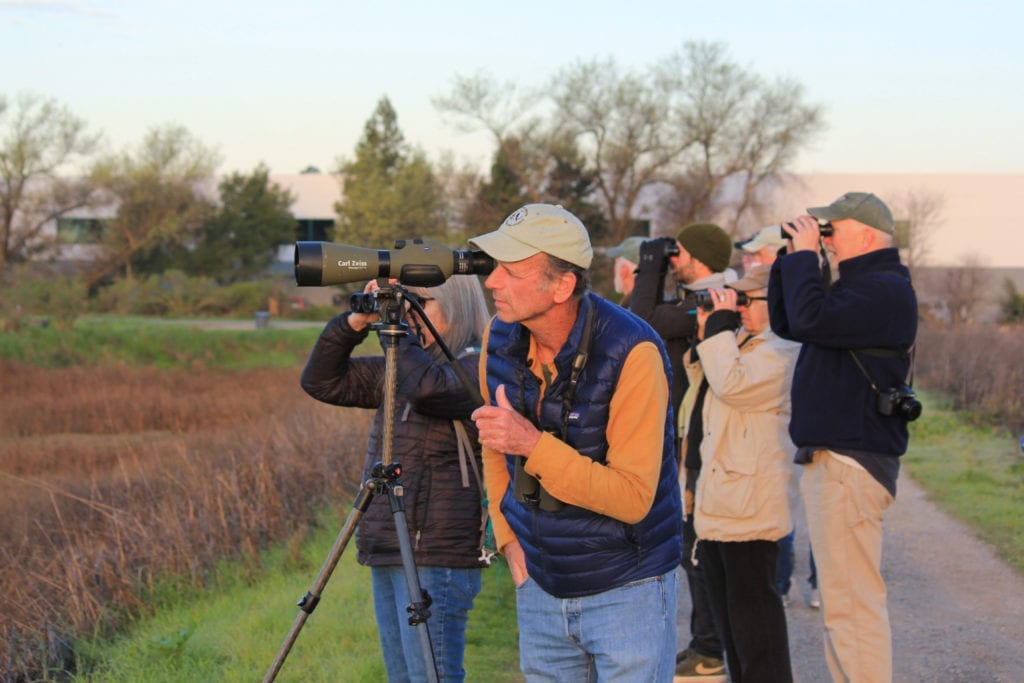
Whatcha seein’, Peter?
Near the Point Blue building, we spotted the recently reported “Storm Wigeon” – a male American Wigeon with unusually extensive white on its head and neck.
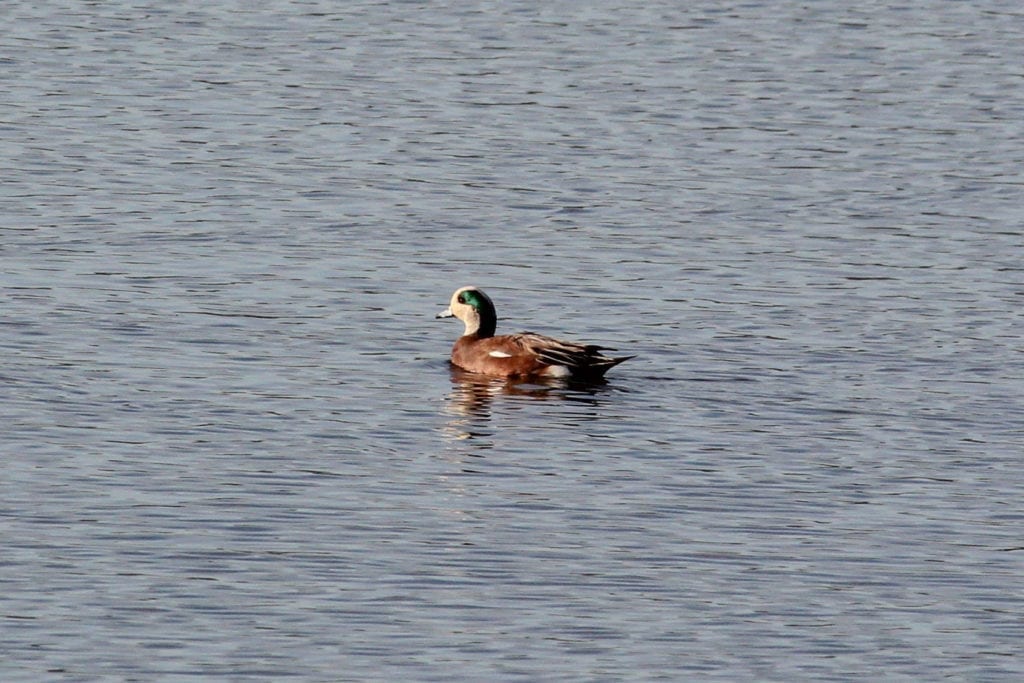
American “Storm” Wigeon – flashy!
Green-winged Teals puttered by in decent numbers.
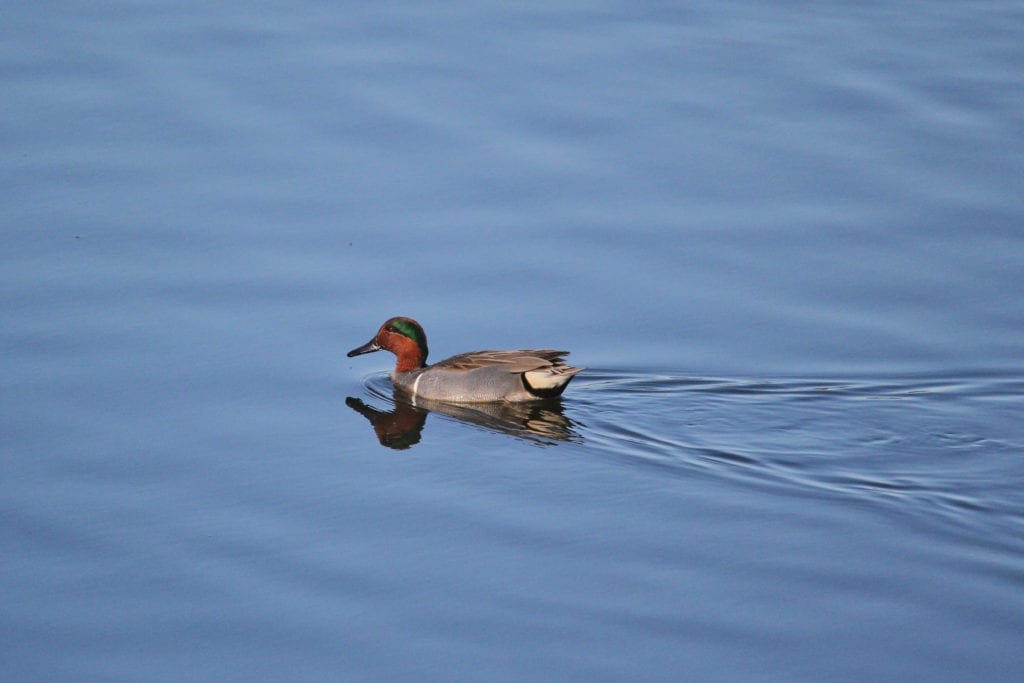
Green-winged Teal
Also abundant were the 1,000+ American Coots. Check out the American Coot’s particularly strange feet below. There’s a method to that weirdness – the structure of the foot makes the coot proficient on both land and water.
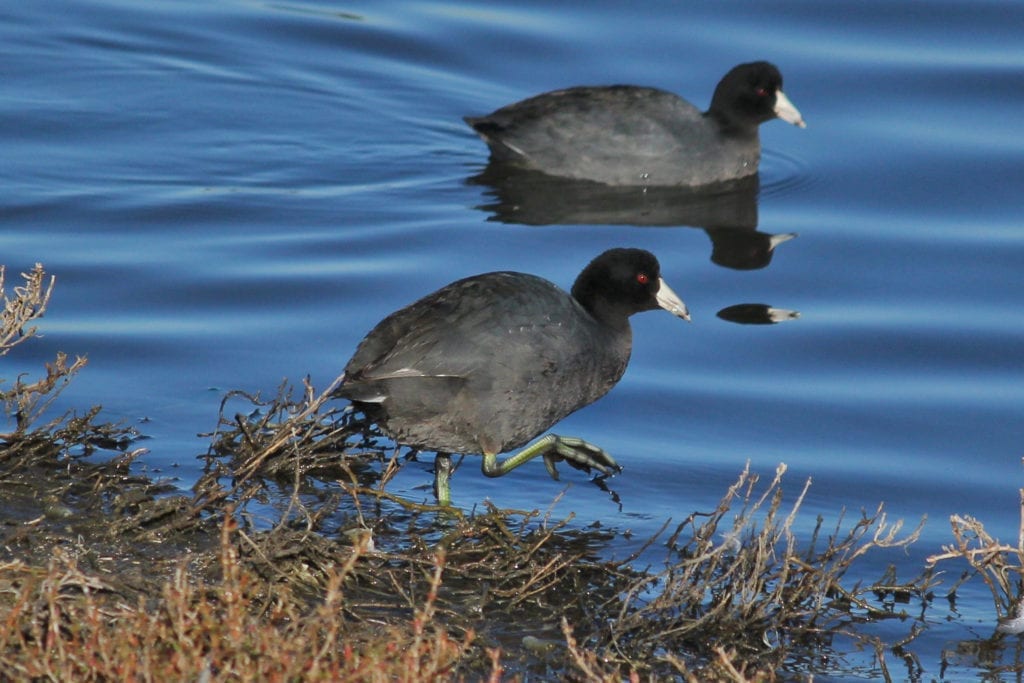
American Coot
It’s unclear whether more individual birds or individual midges were present. Our money’s on the midges!
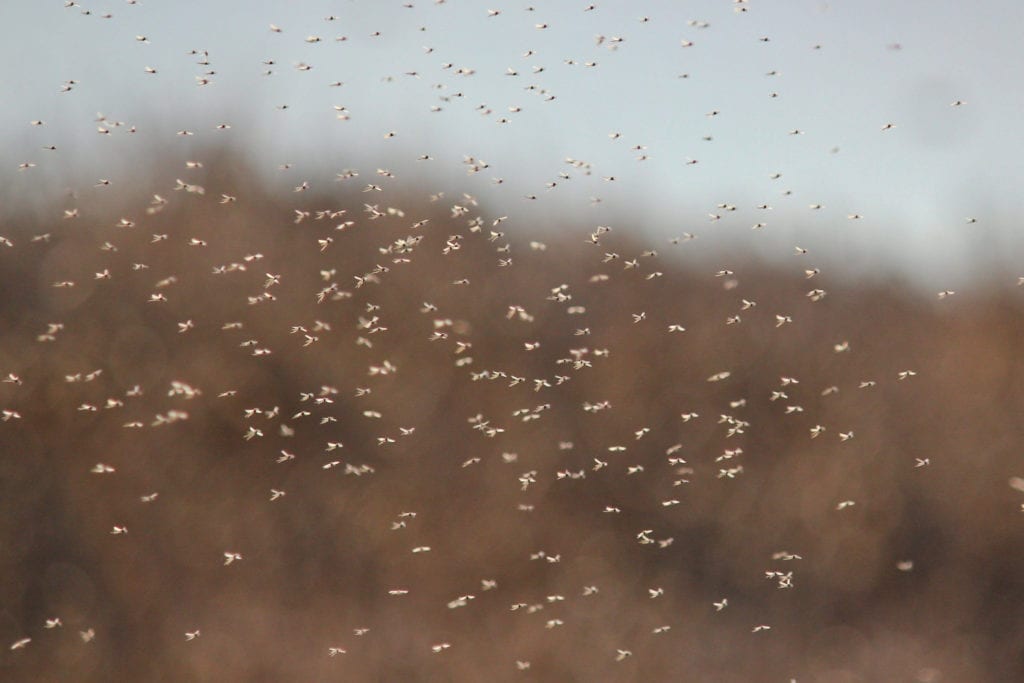
Swarm of midges
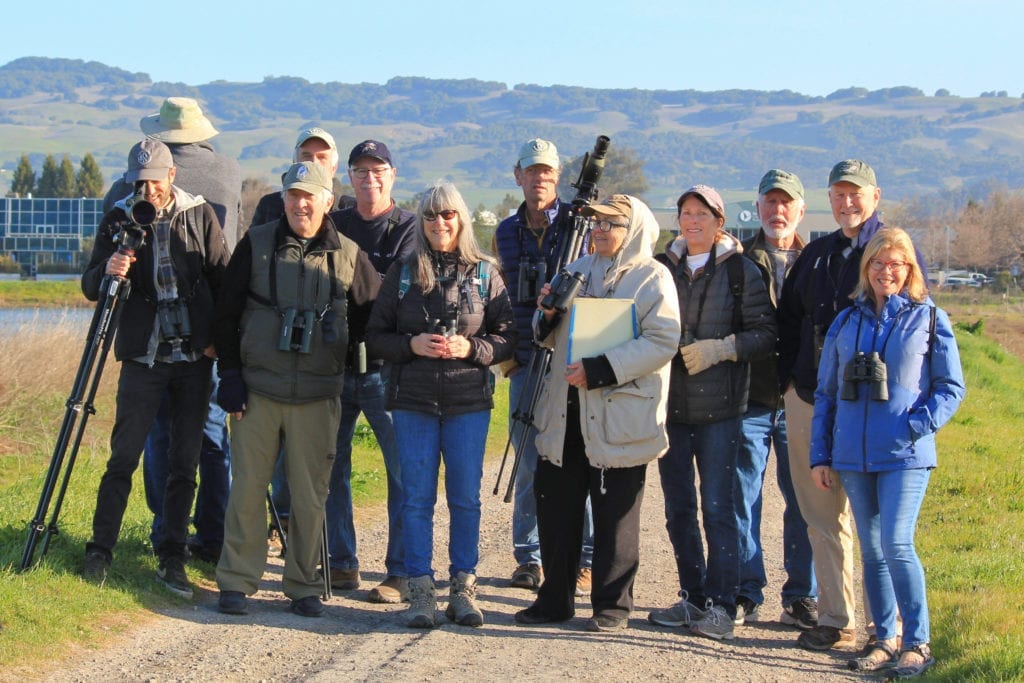
[L-R] Miles, Craig, Len, Malcolm, Rob, JoAnn, Peter, JJ, Mary, Andy, Gary, Joan (not pictured – Teresa)
We love this time of year where the energy of spring is palpable, but we still get to enjoy the presence of overwintering birds in the park – like the Lincoln’s and White-crowned Sparrows.
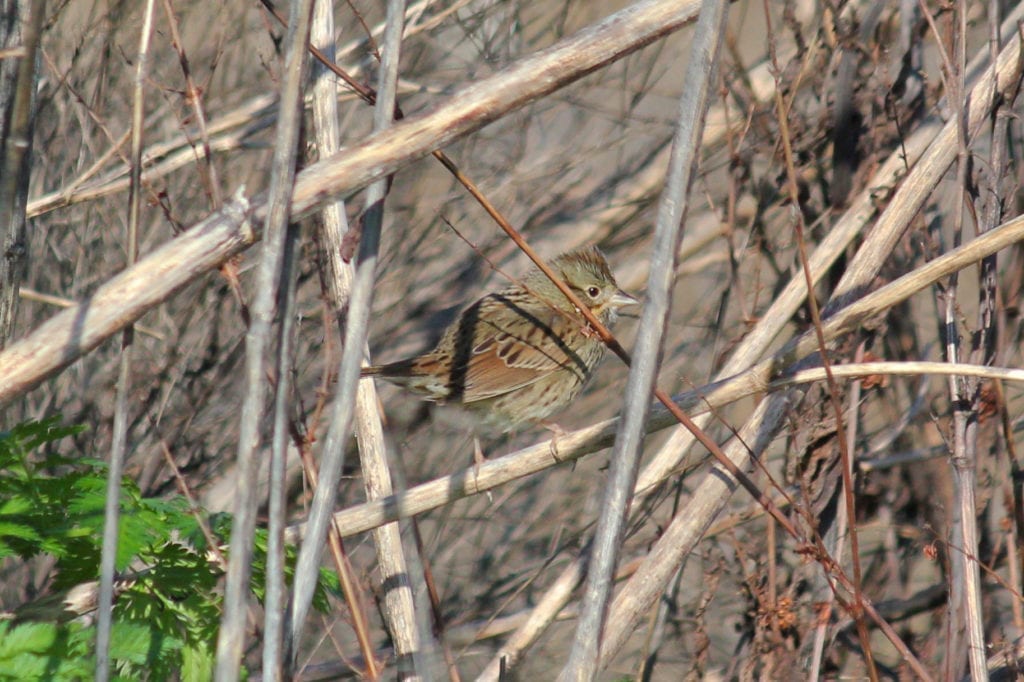
Lincoln’s Sparrow
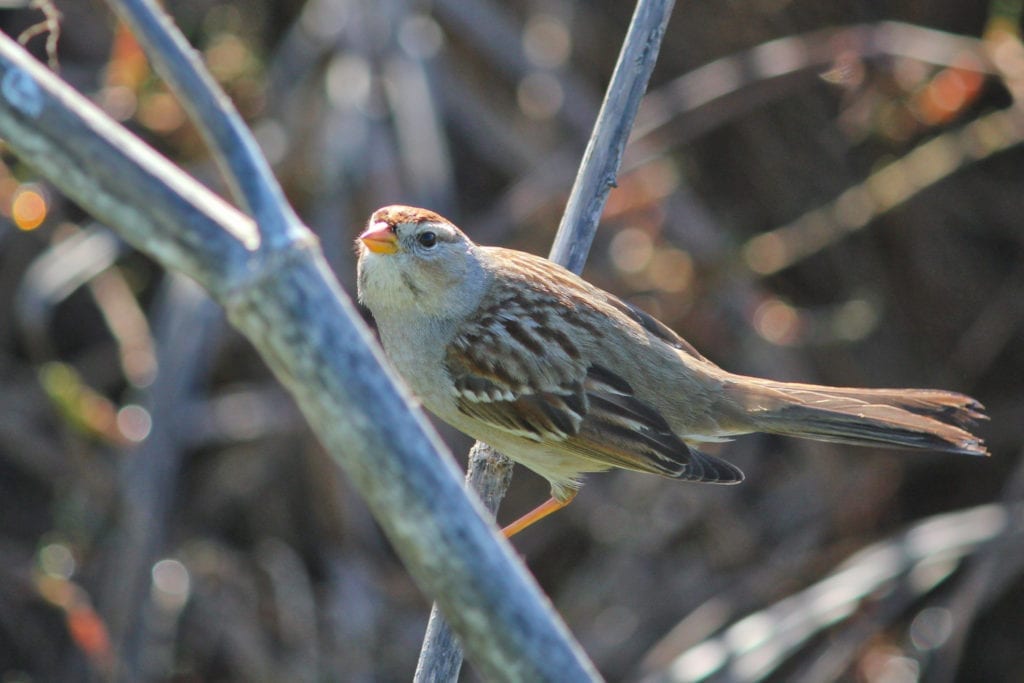
White-crowned Sparrow
We’ve heard loads of Song Sparrow songs – but we really think this sassy song takes the cake!
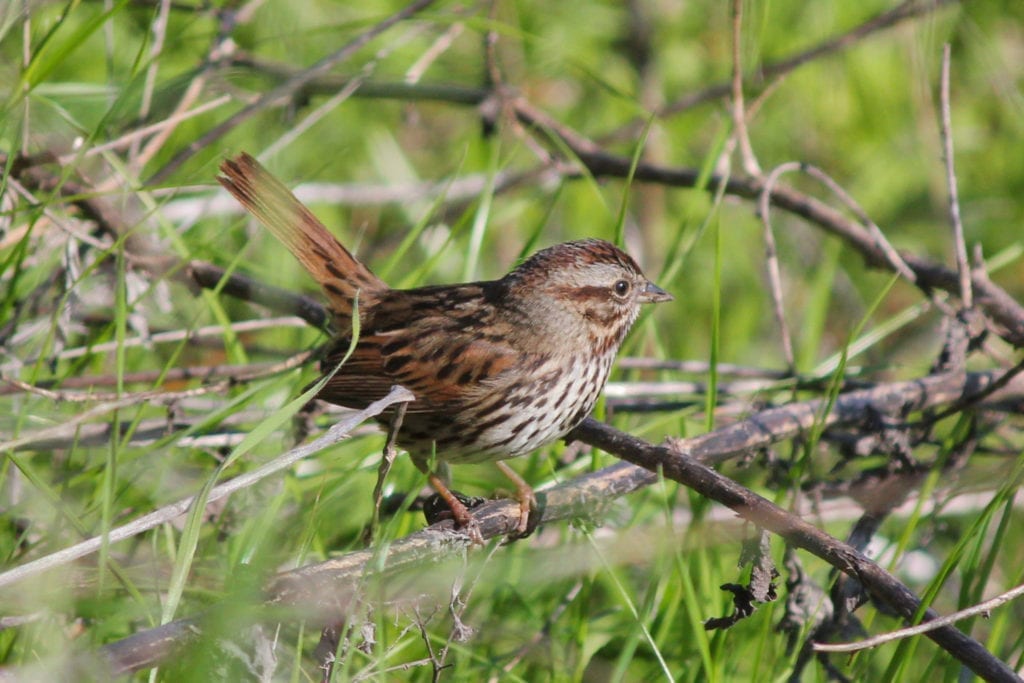
Song Sparrow
Marsh Wrens have begun singing around the wetlands as well.
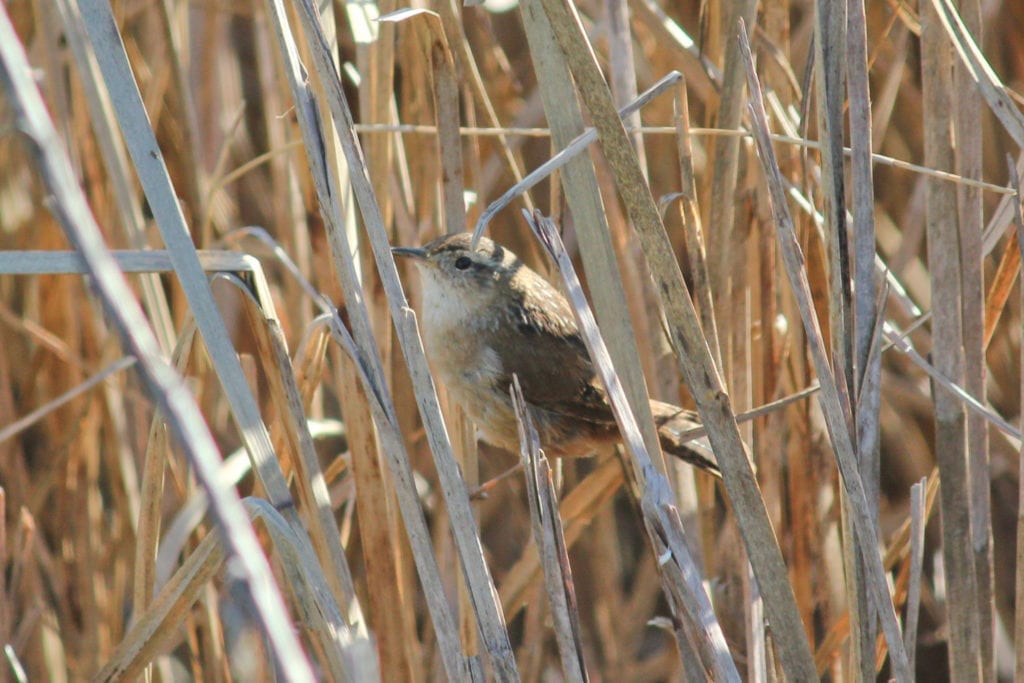
Marsh Wren
We heard a piercing call coming from the tall grass, and soon saw a female Northern Harrier take flight from the ground. According to the “Birds of the World” resource, this descending call serves different functions depending on time of the year. During winter, female harriers use this as an alarm when a predator is close, and during breeding months, the call is used to solicit copulation or a food transfer from a nearby male.
Did this jackrabbit skedaddle because it heard the Northern Harrier nearby, or was it just having a springtime frolic?
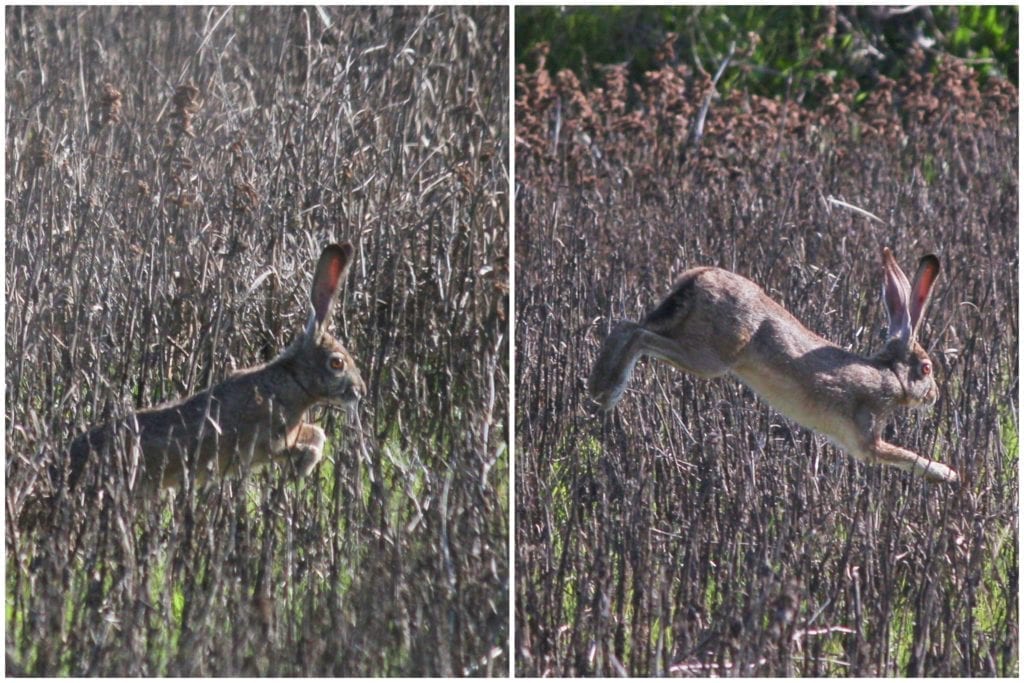
Black-tailed Jackrabbit
As the trail paralleled the Petaluma River, a small flock of Canada Geese landed loudly nearby.
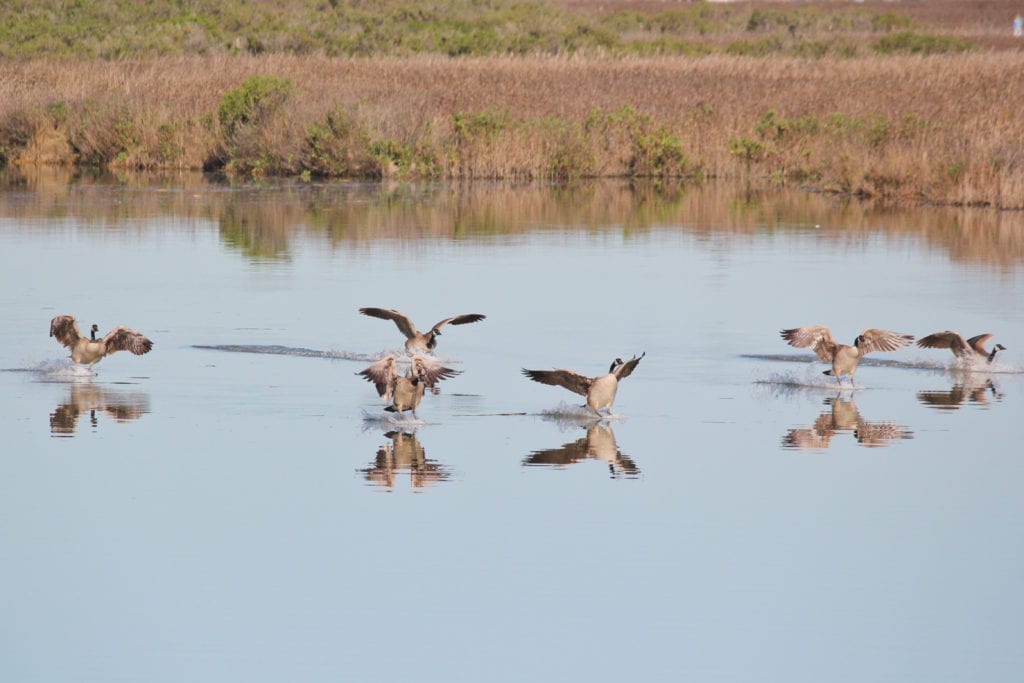
Incoming!!
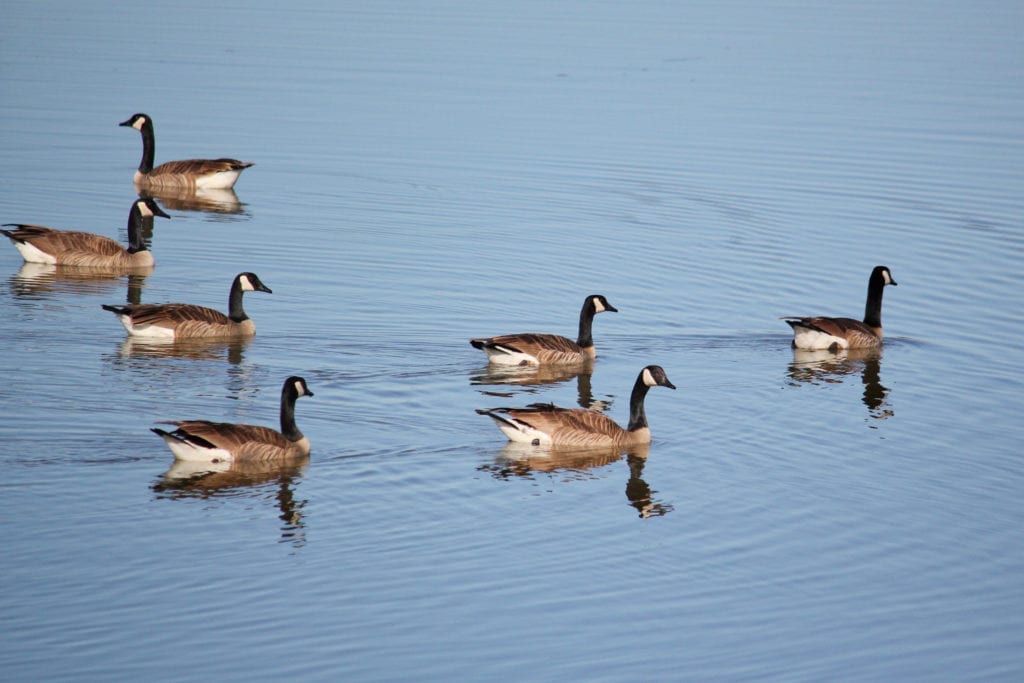
Canada Geese
We rounded the next corner, and a long-awaited sound filled the air – dozens of Tree Swallows swarming several nesting boxes!
Some were already paired up and declaring their favorite box.
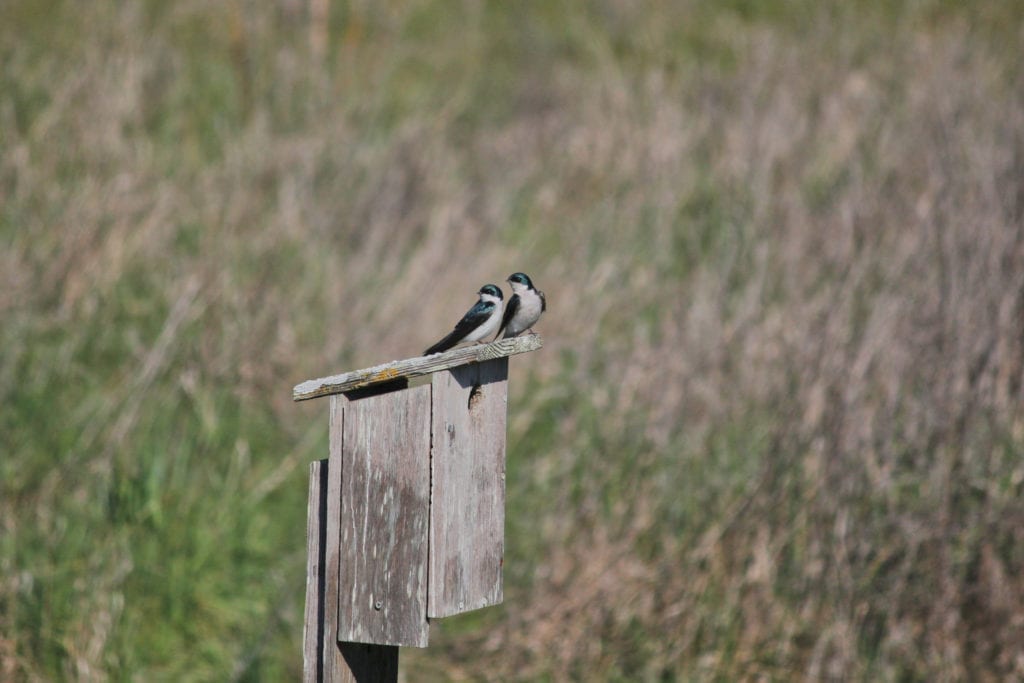
We like what you’ve done with the place, you two!
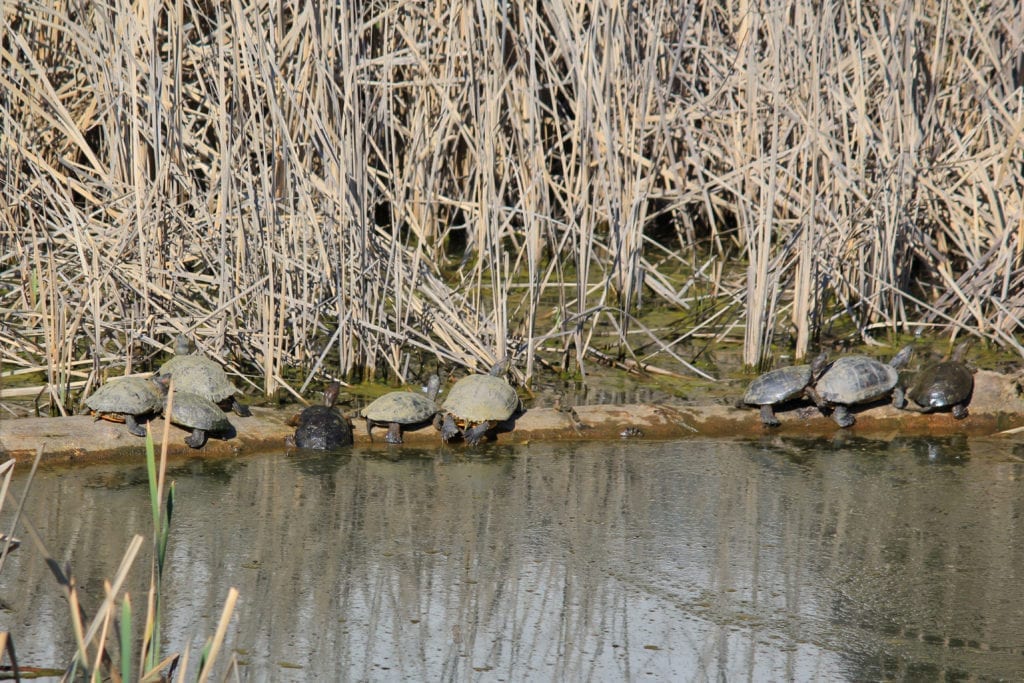
Western Pond Turtles and Red-eared Sliders
As we wrapped up, this Yellow-rumped Warbler of the Audubon’s variety bid us adieu from a high perch.
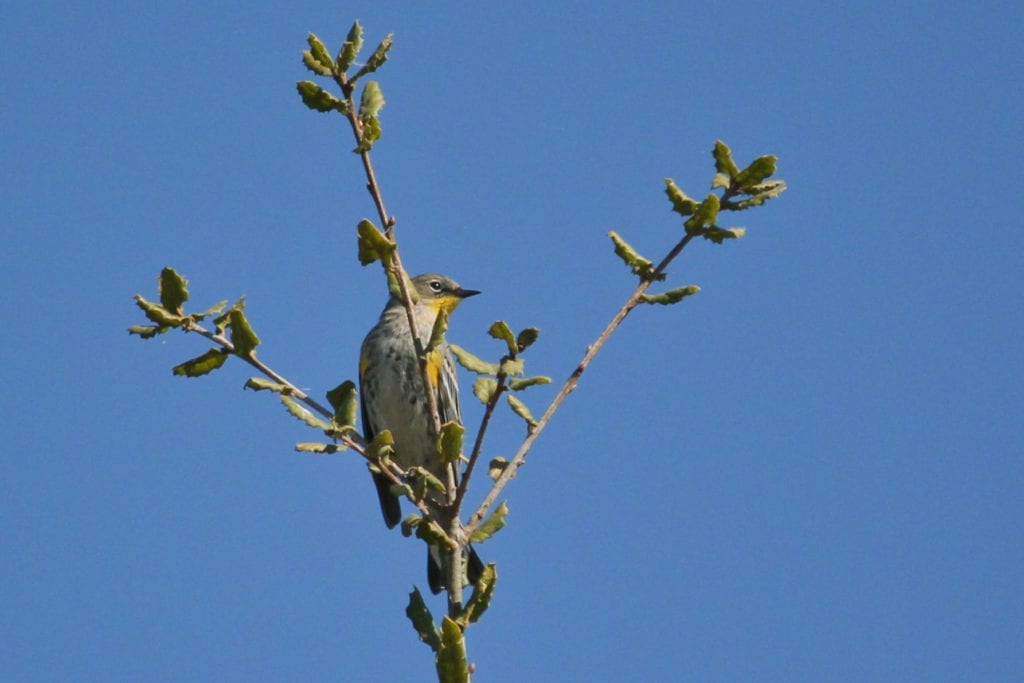
Yellow-rumped Warbler (Audubon’s)
By the end of the morning, the team had tallied 70 species. Later in the day, a team member spotted a Bald Eagle across the central pond, bringing the grand total to 71 for PWA’s February 2020 survey.
This has been your in-the-field recap of the PWA’s February bird survey. These are just one of the many ways the PWA fulfills its mission statement:
Dedicated to the stewardship, restoration, and expansion of wetlands and associated wildlife habitats.
We’re Miles and Teresa Tuffli of I’m Birding Right Now. We are PWA members and bird survey volunteers. Check back for future reports!
If you have any questions about this particular count or if you’re interested in participating in future counts, please contact the coordinator/compiler for these surveys, Len Nelson, at lennelsn@comcast.net.


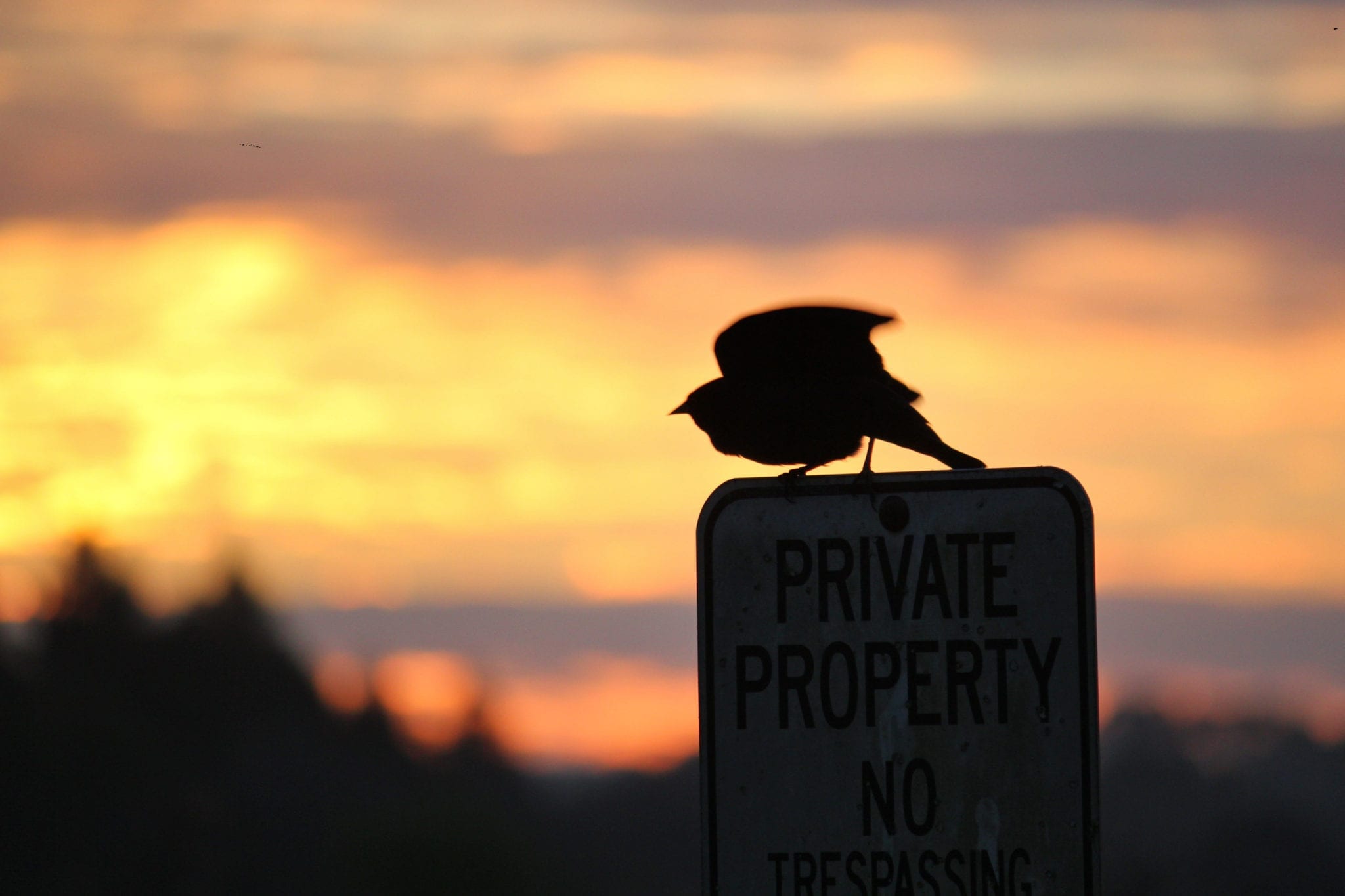

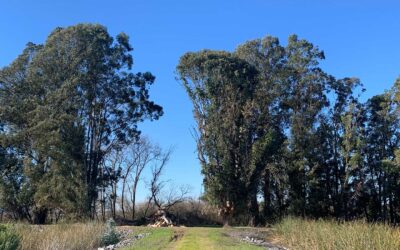
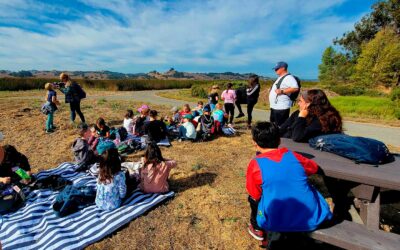
0 Comments